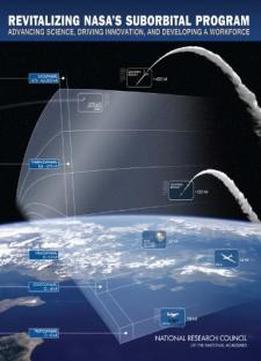
Revitalizing Nasa's Suborbital Program: Advancing Science, Driving Innovation, And Developing A Workforce
by National Research Council /
2010 / English / PDF
3.6 MB Download
Suborbital flight activities, including the use of sounding rockets, aircraft, high-altitude balloons, and suborbital reusable launch vehicles, offer valuable opportunities to advance science, train the next generation of scientists and engineers, and provide opportunities for participants in the programs to acquire skills in systems engineering and systems integration that are critical to maintaining the nation's leadership in space programs. Furthermore, the NASA Authorization Act of 2008 finds it in the national interest to expand the size of NASA's suborbital research program and to consider increased funding.
Suborbital flight activities, including the use of sounding rockets, aircraft, high-altitude balloons, and suborbital reusable launch vehicles, offer valuable opportunities to advance science, train the next generation of scientists and engineers, and provide opportunities for participants in the programs to acquire skills in systems engineering and systems integration that are critical to maintaining the nation's leadership in space programs. Furthermore, the NASA Authorization Act of 2008 finds it in the national interest to expand the size of NASA's suborbital research program and to consider increased funding.Revitalizing NASA's Suborbital Program
Revitalizing NASA's Suborbital Program is an assessment of the current state and potential of NASA's suborbital research programs and a review of NASA's capabilities in this area. The scope of this review includes: existing programs that make use of suborbital flights; the status, capability, and availability of suborbital platforms; the existing or planned launch facilities for suborbital missions (including the Stratospheric Observatory for Infrared Astronomy); and opportunities for scientific research, training, and educational collaboration in the conduct of suborbital missions by NASA.
is an assessment of the current state and potential of NASA's suborbital research programs and a review of NASA's capabilities in this area. The scope of this review includes: existing programs that make use of suborbital flights; the status, capability, and availability of suborbital platforms; the existing or planned launch facilities for suborbital missions (including the Stratospheric Observatory for Infrared Astronomy); and opportunities for scientific research, training, and educational collaboration in the conduct of suborbital missions by NASA.The findings illustrate that suborbital program elements-airborne, balloon, and sounding rockets-play vital and necessary strategic roles in NASA's research, innovation, education, employee development, and spaceflight mission success, thus providing the foundation for achievement of agency goals.
The findings illustrate that suborbital program elements-airborne, balloon, and sounding rockets-play vital and necessary strategic roles in NASA's research, innovation, education, employee development, and spaceflight mission success, thus providing the foundation for achievement of agency goals.











